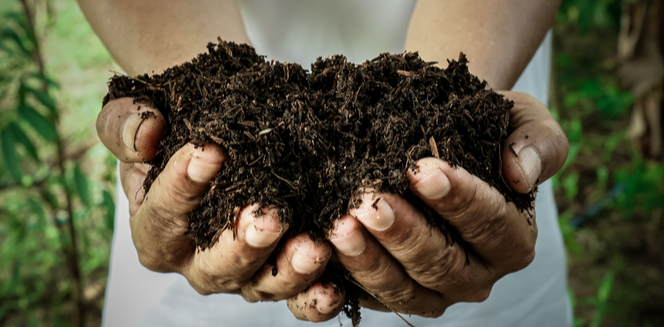Innovations in organic fertilizers to accelerate with investments by governments and private sectors

17 Jan
2022
The adoption of organic fertilizers speeds up as government, private sectors, universities, and research institutes take different initiatives to promote usage. Whether it be development of new fertilizers to investments in the new projects, the utilization of natural-ingredients based fertilizers will fall into hands of farmers in abundance in the next few years. With promotion and encouragement to natural farming practices, research institutes have been taking up development activities of organic fertilizers and training farmers in developing such fertilizers.
National Dairy Research Institute (NDRI), one of the institutes from India, developed a fertilizer from cow dung, jaggery, water, and gram flour. The scientists at the institute claimed that this fertilizer increases the carbon content in the soil up to 0.9 percent. The institute will offer free of cost training to farmers regarding the production process and also sell the fertilizer to general public. Such initiatives are gaining momentum across the world with municipal corporations installing new machines and startups taking a leap in producing organic fertilizers through innovative methods. The adoption of organic fertilizers will increase in the coming years with investments from governments and private investors. According to the report published by Allied Market Research, the global organic fertilizers market is expected to generate $15.9 billion by 2030. Following are some of the activities taking place across the world.
Innovative methods to develop organic fertilizers have been developed by various municipal corporations with supportive government initiatives. Ara Municipal Corporation installed two food waste composting machines, and is expected to install five more machines. The civic body plans to produce organic fertilizers from food waste such as leftover food, fruit peels, vegetables, and others. This food waste can be collected from households and restaurants. The corporation tested these machines with the help of generator. Once it gets the power supply and transformer, two machines will begin production of fertilizers. Each machine has a capacity of producing 50 kilograms of compost from the 50 kilograms of food waste in only 24 hours.
The production of fertilizers from food waste will not only get rid of foul smell but also help residents and vegetable vendors to eliminate their wasted food such as cabbage peels and cauliflower peels. Residents can segregate the wet waste and dump in waste collection bins placed by municipal corporations. This wet waste can be utilized in these machines to product organic compost. Moreover, farmers will be benefited from the organic fertilizers as they help in keeping the soil quality intact.
Along with new initiatives taken by the government sector and civic bodies, the private sector has been taking different steps to promote the utilization of organic fertilizers. Raising funding to accelerate the production activities and development of innovative fertilizers is one of the major steps taken by market players. Startups have been taking steps to speed up their green projects. Mazao Fertilisers, a Kenyan startup developing liquid organic fertilizers, raised a funding of Sh10 million over two years for consolidating its operations. A Danish-funded programme will provide the funding of Sh5 million for the first year and another Sh5 million will be given when the contract is extended for a year.
The programme aims to accelerate scale up and commercialization of climate-smart innovations and tackle challenges regarding climate change. Mazao Fertilisers develops a 100 percent liquid organic fertilizer that can be utilized for throughout the crop life. From planting to flowering to the last stages of crop life, this fertilizer provides one of the best options for farmers. These products offer environmental as well as social benefits. This factor boosts their adoption, and will increase the demand in the coming years.

Koyel Ghosh
Author’s Bio- Koyel Ghosh is a blogger with a strong passion and enjoys writing in miscellaneous domains, as she believes it lets her explore a wide variety of niches. She has an innate interest in creativity and enjoys experimenting with different writing styles. A writer who never stops imagining, she has been serving the corporate industry for the last five years.
Avenue: Entire Library membership of Allied Market Research Reports at your disposal
- Avenue is an innovative subscription-based online report database.
- Avail an online access to the entire library of syndicated reports on more than 2,000 niche industries and company profiles on more than 12,000 firms across 11 domains.
- A cost-effective model tailored for entrepreneurs, investors, and students & researchers at universities.
- Request customizations, suggest new reports, and avail analyst support as per your requirements.
- Get an access to the library of reports at any time from any device and anywhere.
Related Post
-
How are Submarine Cables Transforming Global Connectivity with Enhanced User Experience?
-
Endoscopy Procedures: Transformations in Techniques and Applications
-
AI-Powered Video Analytics: How the Product Actually Works for enterprises
-
Painting Robots: Transforming Precision Coating and Creative Applications
-
Innovations in Pharmacovigilance Systems Advancing Patient Safety
-
Understanding Edge Security: Keeping Data Safe Near the Source
-
Exploring the Use and Advancements of 3D Laser Scanners in Professional Applications
-
Reinforcing Industrial Controls with Smarter Tools and Training








